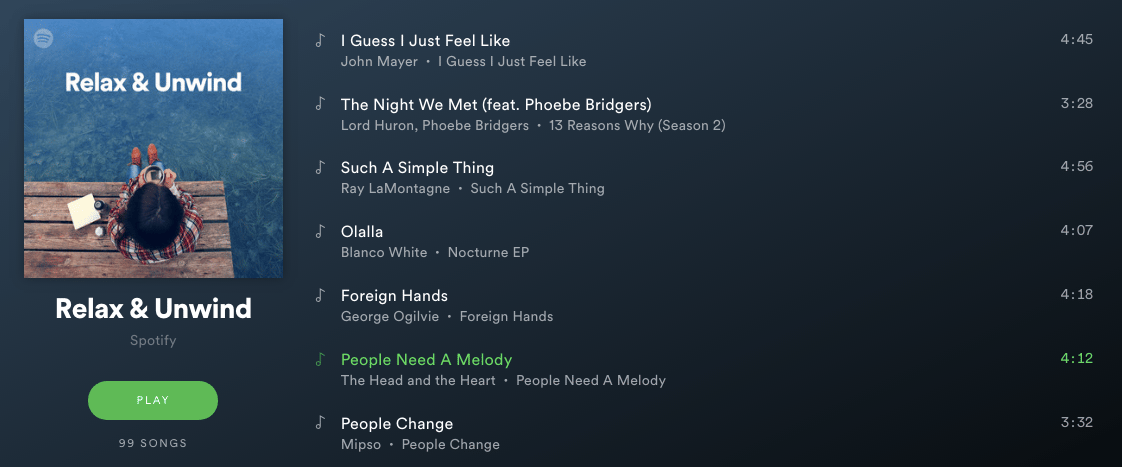
Music and our bodies are infatuated with each other; they synchronize through vibration and cycles. Music therapy takes everything one step further. It’s art and science and humanity and wellbeing (in the form of sound organized in time), given to another human by a board-certified musician and therapist. In this article, you’ll learn some ways to use music to reduce stress and anxiety outside of a music therapy session.
Anxiety is your body’s natural response to stress. It’s a feeling of fear or apprehension about what’s to come. In her book, ‘Manage Your Stress and Pain through Music’, Dr. Suzanne Hanser reminds us that we have both good and bad stress in our lives. For example, the stress felt by a drummer who is focusing on groove, musicality, and locking in with the band is probably eustress, a condition that comes with some benefits. But the stress that causes generalized anxiety before the gig – distress – may result in a poor performance.
All types of stress tax our bodies, making us work hard to fight whatever threat our minds have conjured up. Even a successful performance will exhaust the player, who may emerge from the stage perspired and out of breath.
Dr. Hanser also points out that any triumphant performance may demand stress – that the performer must be pushed with a burst of noradrenaline to achieve the most magnificent sounds and original musical interpretation. Noradrenaline (or norepinephrine) facilitates connections between neurons in our brains, but it is also a stress hormone. It is responsible for accelerating our heart rate, directing the blood to flow into our muscles, and causing myriad other bodily functions to prepare us for lifesaving action. Some performers count on this tension to catapult them into a new level of super awareness or peak/breakout experience.
At the other end of the spectrum, however, too much stress and anxiety is hazardous to your health.
One of the most effective uses of music therapy is in finding natural anxiety relief. Research shows that music can positively influence regions of the brain that manage anxiety and stress, with music therapy able to significantly lower anxiety levels. One of the major reasons music therapy is so effective is that music can shift your focus away from a stressful or uncomfortable event to something pleasant and soothing. In that way, it serves as a distraction. But music therapy does more than just that; music can help to reduce stress and anxiety through multiple pathways. It affects physiological factors like heart rate and hormone levels, modulates the nervous system, and has psychological effects, as well.
According to music therapist Deborah Seabrook, “Music therapy has special benefits for musicians because we are working within the language that we have been trained in, perform in, and know intimately. This allows us to enter the world of music in a unique way, and to address music-related issues at the source. Music therapy for musicians can address performance anxiety, relationship with your instrument, relationships within an ensemble, reconnecting to the joy of making music and revitalizing creativity”.
Dr. Albert Schweitzer, a Nobel prize-winning physician, believed that you know yourself better than anyone else. He said, “Every patient carries her or his own doctor inside.” Taking a little time to evaluate what is happening in your body and mind when you are in discomfort may also help you to identify the appropriate action for you. If your stress or anxiety requires medical intervention, it is recommended you consult with professionals, explore diverse approaches, and pursue treatment. You are responsible for your own healthcare.
Performing a self assessment helps you understand what is going on when you are under stress, and what you need from music to cope with stress and anxiety.
Ask yourself the following questions, and take an entire day to note when you feel anxious:
Then, the next day, observe whether the same patterns recur, or if new sources become apparent. What happens before and after you feel stress? At the same time, think about what you are feeling throughout your entire body when anxiety kicks in. Where do you feel tension?
And when you feel stressed, what are you thinking? Do you tend to worry? Do you think the worst? Are you overly hard on yourself? Begin to focus on self-observation without judgment.
Be curious about yourself and observe yourself, as though you’re on the outside looking in.
Has music ever brought on tears? Does it remind you of special times or special people? Is there a song/piece that gives you chills? In childhood, were there songs that your family sang? Were your teenage years a good time of your life, and if so, what music did you listen to? Were there songs from TV shows, movies or concerts that were memorable? What music do you associate with milestone events, celebrations or vacations? Is there spiritual or religious music that is important to you?
Now focus on your more recent listening habits. What, if any, music do you enjoy in the morning? Do you listen while traveling? During the day, are there songs/pieces that keep you going or affect your mood? Do you listen to music at the end of the day? Begin to answer these questions by adding songs to a brand new playlist.
In her book, Dr. Hanser discusses categorizing these choices into playlists that suggest certain outcomes for you. Here are some potential groupings:
Once you’ve identified and implemented these new playlists into your daily life, be aware of their effect on you. Make changes, add, and delete these playlists as needed moving forward. Some songs may fit in more than one category. Plan when you want to listen to these playlists. Create a specific playlist for an anticipated stressful event or a part of your day that inevitably creates anxiety.
And then, once you’ve identified the familiar and favorite songs in your life, challenge yourself to listen to some music you’ve never heard before. See what it does for you and how it can be used in your life to potentially decrease stress and anxiety.

To potentially decrease performance anxiety, visualization helps you learn, understand, and gain a deeper knowledge of your music. Visualization is imagining a relaxing scenario, experience, or series of images to harness the brain’s ability to learn and remember the positive emotions associated with these things, and then being able to recall those in real life, anxiety-producing scenarios. As a drummer, visualization has the ability to deepen your learning and enhance self-confidence and self-expression during performance.
First, find a quiet spot where you are alone, with no distractions (turn off your phone notifications) and make yourself comfortable (preferably lying down).
Improvising – with no end goal or purpose except to simply make music – invites you to experiment with different ways of being, and practice that new way in real time with real music. Improvisation can remind you of the freedom that making music brings.
You can use this technique to enhance these areas and more:
In music therapy, we use a technique (called the iso-principle) by which music is matched with the mood of a client, then gradually altered to affect the desired mood state.
You can use music to control your breathing and relaxation. It helps you to decrease anxiety in everyday life and refocus within a performance context or music environment. Within our daily lives, entrainment is the tendency to synchronize an aspect of oneself with an external rhythm, say, tapping your foot to music.
You can listen to or play a song that will give you different results depending on the tempo. If you practice entrainment while you’re in a relaxed state, you can prepare your body to respond a certain way to these songs in the future. So if you find yourself beginning to feel anxious or know that a potential stressful situation is coming up, listen to music at a BPM you’ve trained yourself to associate with pleasant emotions. Your brain will retrieve these pleasant emotions to counteract the anxiety.
Here are a few examples for our rhythm-keeping brains:
Many factors (age, body physiology, health, etc.) can cause those numbers to fluctuate, and this highlights how results of entrainment can differ for every individual.
As a drummer and musician, we have both a deep sense of trust and a multi-faceted relationship with music. It’s potentially our most comfortable means of connecting with the world, and reconnecting when our bodies are under stress. Music therapy offers both verbal and non-verbal avenues of communication and expression, thus making it an extremely effective treatment for anxiety.
H. Benson, W. Proctor, The Breakout Principle (New York: Scribner, 2003).
S. Hanser, S. Mandel, Manage Your Stress and Pain through Music (Boston: Berklee Press, 2010).
Amy Di Nino is a multi-instrumentalist, music psychotherapist and conductor based in Cambridge, Ontario. She is the drummer of Cootes Paradise, who was nominated for new artist of the year at the Maple Blues Awards.


By signing up you’ll also receive our ongoing free lessons and special offers. Don’t worry, we value your privacy and you can unsubscribe at any time.
We use cookies for traffic data and advertising. Cookie Policy »